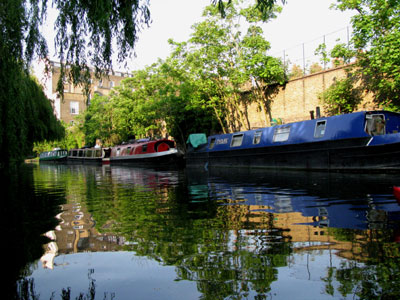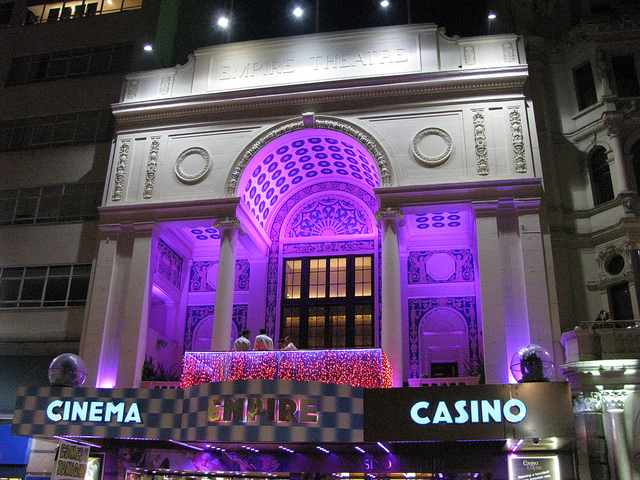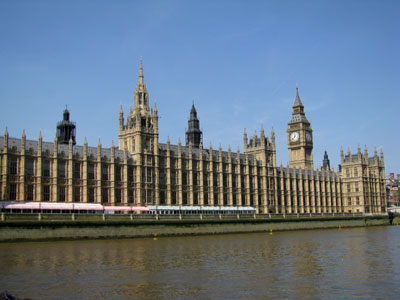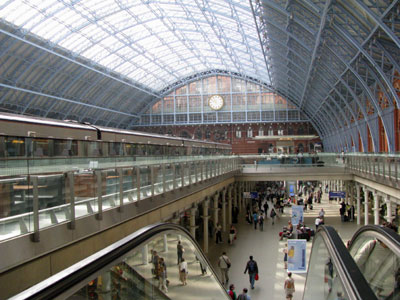Our second day in London greeted us with brilliant sunshine, and even though it was still early May, temperatures in the mid twenties (Celsius, of course) were in store for us. Andrea and I started our day with a nice breakfast at the Zetter Hotel, a boutique hotel in London’s fashionable Clerkenwell area. The main floor restaurant offers an extensive breakfast buffet, but occasionally, when I really enjoy a menu item I have no hesitation to order it again. Yesterday I had already savoured the Zetter’s Banana Strawberry Crepe, and today it called me again. The sun was flooding in through the tall windows in the restaurant, and we started to devise our plan of attack for our explorations of the city.

A great view from my rooftop room at the Zetter on a gorgeous day
I wanted to get a good overview of London, so I turned to my travel partner and London aficionado Andrea to get an idea of how we should best get an introduction to this huge, exciting city. Of course one of the traditional ways of doing this is by booking a sight-seeing trip with a tour company. But Andrea, being an insider of the city who has been to London probably about 30 times, knew a more efficient and affordable way of doing this: the Number 11 bus, part of London’s extensive public transit system.

Breakfast is calling
So we hopped on the Tube and made our way to Liverpool Street Station to get on the famous Number 11 bus whose route takes you past so many important sights of the city. We lined up for the modern double-decker bus and just got unlucky as four other travelers took the front-row seats on the upstairs level of the bus. We started taking video clips of the experience and occasionally pushed our way to the window of the bus to get a better view of the sights in front of us.

View from the No. 11 bus
The bus passes by Threadneedle Street and Bank Station in the heart of London’s banking district. The Bank of England and Mansion House, the official residence of the Lord Mayor of London, are some of the major sights in this area. Further on, Queen Victoria Street is the extension of Threadneedle Street. We caught a glimpse of St. Paul’s Cathedral, the seat of the Bishop of London. Designed by famous architect Sir Christopher Wren, the first stone of this massive church was laid in 1677, and it was finally completed in 1708. The impressive dome of this cathedral was inspired by St. Peter’s Basilica in Rome.

St. Paul’s Cathedral from the doubledecker bus
St. Paul’s narrowly survived a World War II air raid when in 1940,
after two smaller bombings, a time-delayed bomb was found in time and detonated in a safe area. This bomb would have definitely destroyed this jewel of a church. Traditionally, most of the royal weddings and christenings are held at Westminster Abbey, but Prince Charles and Lady Diana got married right here, at St. Paul’s Cathedral.
The 530 steps to the top of St. Paul’s golden gallery provide a stunning view of London. Non-worshipping visitors are charged a fee to enter the church, but attendance is free during one of the popular Evensongs that are held in the late afternoon. (Evensongs are evening prayers in the Anglican Church).

An ancient pub
Past Ludgate Circus our bus turned onto Fleet Street which was the centre of the British press until the 1980s. The last British news agency, Reuters, relocated from the area in 2005 while the French-owned international news agency Agence France Presse is still located on this street. Today Fleet Street features many law offices while the newspapers have mostly moved to the Canary Wharf area.
Fleet Street turns into The Strand at Temple Bar which represents the boundary of the City of London and the City of Westminster. The word “strand” is originally derived form the Old English word for “river bank”, and the River Thames is indeed just a few blocks to the south. Until the construction of the Victoria Embankment between 1865 and 1870, The Strand was indeed the shoreline of the River Thames. From the Victorian era onwards, The Strand became a fashionable residential district and famous people such as Charles Dickens and John Stuart Mill lived here. Many renowned theatres were located in this area until the first half of the 20th century.

Beautiful architecture along the No. 11 bus route
Charing Cross railway station is the next stop on the Number 11 bus. Opened in 1864, it originally featured six platforms with a curved wrought iron roof. The elaborate roof structure collapsed in 1905 and killed six people. It was later replaced by a utilitarian post and girder design. A post-modern office and shopping complex called Embankment Place has been covering the platform area since 1990.
We then came up on Trafalgar Square which is anchored by Nelson’s Column, which commemorates the death of Admiral Horatio Nelson in the Battle of Trafalgar. Built in the early 1840s, the statue is protected by four lions that were added in 1867. The Battle of Trafalgar was a historic naval battle between the British Royal Navy and the combined fleets of Spain and France which was part of the Napoleonic Wars in the early 19th century. While the French and Spanish fleets lost 22 ships, the British navy did not lose a single vessel due to Nelson’s sometimes unorthodox battle strategies. The French navy never seriously challenged the Royal Navy since then. Since his death in 1805 Admiral Nelson has been celebrated as Britain’s greatest naval war hero.

One of London’s many theatres: Victoria Palace
Our Number 11 Bus took us past Whitehall, the main artery connecting Parliament Square with Charing Cross. This street is home to many of Britain’s ministries and government departments. We swung around at Parliament Square where we caught a brief glimpse of the Gothic spires of the Houses of Parliament before we continued on Victoria Street to Victoria Station, another one of London’s grand old railway stations. This was our final station where we hopped off the bus.

Arrival at Victoria Station
London Victoria is a major subway (or rather tube) and railway station whose railway service connects with the regions of Kent on the east and Sussex and Surrey on the west side of London. This railway terminal is an impressive example of Victorian railway architecture. The railway station was opened in 1862, while the London Underground station started operations only six years later.
Today Victoria Station services the Victoria, District and Circle Lines and is the busiest in the entire London Underground system. More than 80 million passengers pass through here every year. For a subway buff like me it’s always interesting to visit subway stations where multiple lines cross at once. A network of stairs and escalators whisks you deeper and deeper into the interconnected weave of subway tunnels. Public transit in London, with its extensive rail and underground transportation networks, is definitely an exciting experience.

The inside of Victoria Station




